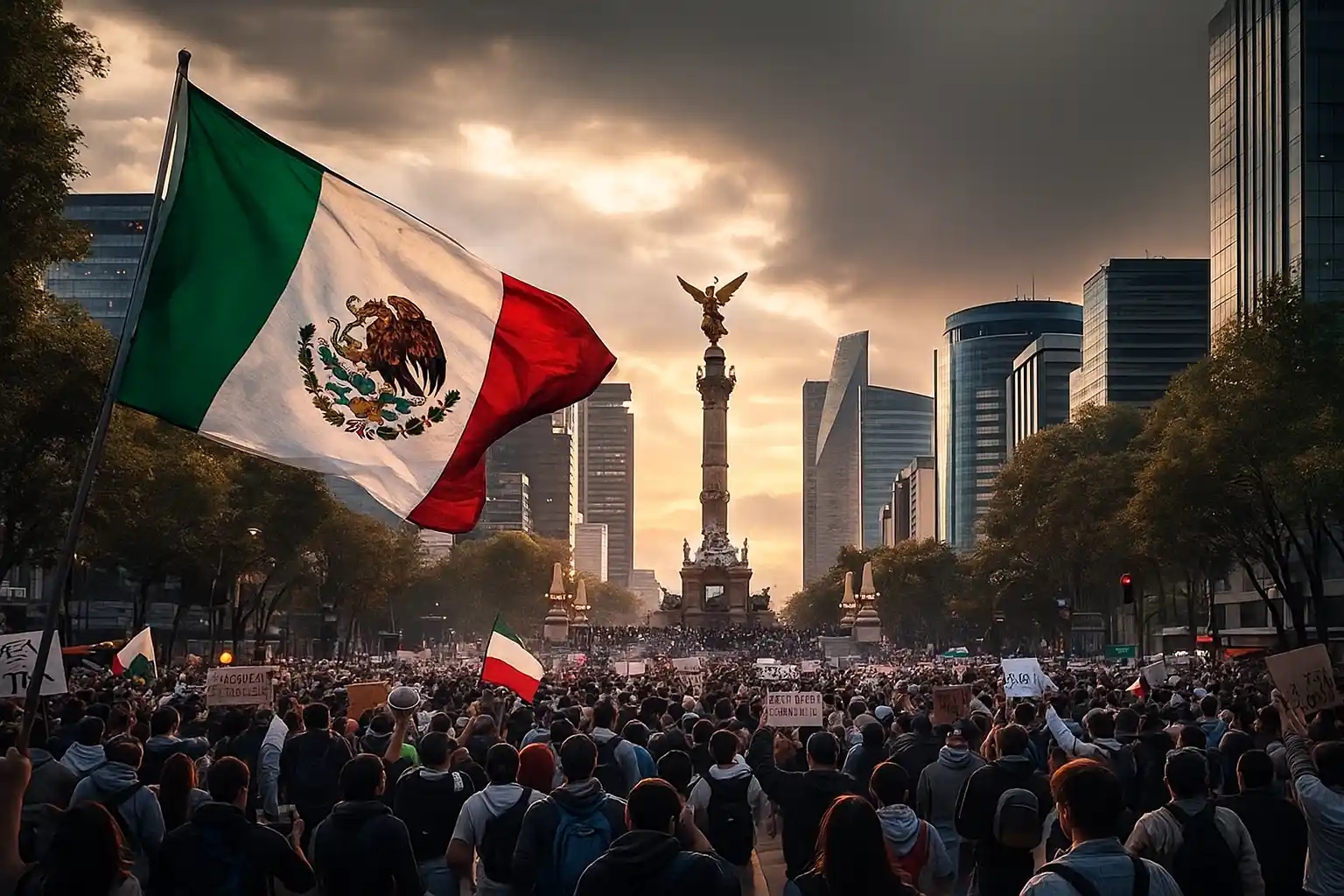
Mexico City, Mexico - For years, Mexico has lived in a kind of political duality—one foot in the world of institutional democracy, the other in the orbit of populist charisma. It has now reached a point where both currents are colliding in real time.

The world is beginning to notice. Headlines increasingly reference Mexico’s “populist surge.” Street protests flare across cities. Institutional reforms once considered unthinkable—like electing judges by popular vote—are moving forward. Younger generations are no longer silent, and traditional political actors appear unable to catch their breath.
What is happening in Mexico is not just a political shift; it’s a structural one. And like all structural shifts, it carries implications far beyond Mexico’s borders.
This is the moment where currents long in motion meet the surface. Mexico is not collapsing. It is changing—and quickly.
To understand Mexico’s present, we need to understand the shadow it stands in: the long tail of Andrés Manuel López Obrador (AMLO). His movement—MORENA—did not simply win elections; it reshaped the political map.
This is classic left-wing populism, but with Mexican characteristics—part nostalgia, part revolt against decades of neoliberal policy, and part frustration at corruption that was never rooted out.
AMLO’s successor, Claudia Sheinbaum, won by a landslide. Congress followed suit. At first glance, it looks like unshakeable dominance.
But dominance isn’t the same as control.
Mexico’s most powerful opponent is not an opposition party—it’s institutional fragility, economic pressure, and public distrust. And these forces don’t care who is in office.
In late 2025, protests swept across Mexican cities. The spark: the assassination of a mayor. The fuel: years of frustration over crime, corruption, and impunity.
The most striking part? The demographics. The movement was led largely by Mexico’s younger generations—educated, online, politically aware, and increasingly unwilling to accept the country’s chronic insecurity as “normal.”
This is not the old left or the old right. It is something newer: a generation raised in a Mexico where the social contract has frayed.
They are not necessarily rejecting MORENA; they are rejecting the situation.
That is a crucial distinction.
Populism often reveals itself in how a government interacts with institutions—and Mexico is moving into historic territory:
Supporters say this democratizes justice.
Critics say it weakens the last firewall between political power and political convenience.
Either way, it is transformational.
The judiciary reform is the clearest signal yet that Mexico is no longer tinkering at the edges. It is rewriting parts of its operating system.
The tension is visible: a government using popular legitimacy to reshape institutions, and a public—especially younger Mexicans—worried that a strong hand can just as easily tighten into a fist.
Populism usually emerges from economic strain or political discontent. In Mexico, it emerges from something even more fundamental: state capacity.
When cartels hold territory, when local officials face routine threats, when violence becomes normalized, the public begins to seek someone—anyone—who promises certainty.
Populism feeds off uncertainty.
But here is the catch: populism does not guarantee better security. Sometimes it creates more volatility by weakening the very institutions needed to stabilize the country.
This is Mexico’s paradox:
It is a circle that cannot hold forever.
The Mexican economy is not collapsing—it is evolving—but inflation, inequality, and global pressures are tightening the screws. The U.S. slowdown or reshoring policies could reshape Mexico’s growth path overnight.
And when economic pressure meets political pressure, movements accelerate.
Mexico’s political moment is not happening in a vacuum. It is happening in what feels like the early stages of a global realignment—where many countries are being forced to confront state weakness, geopolitical exposure, and generational frustration.
Mexico is not unique. But its timing is.